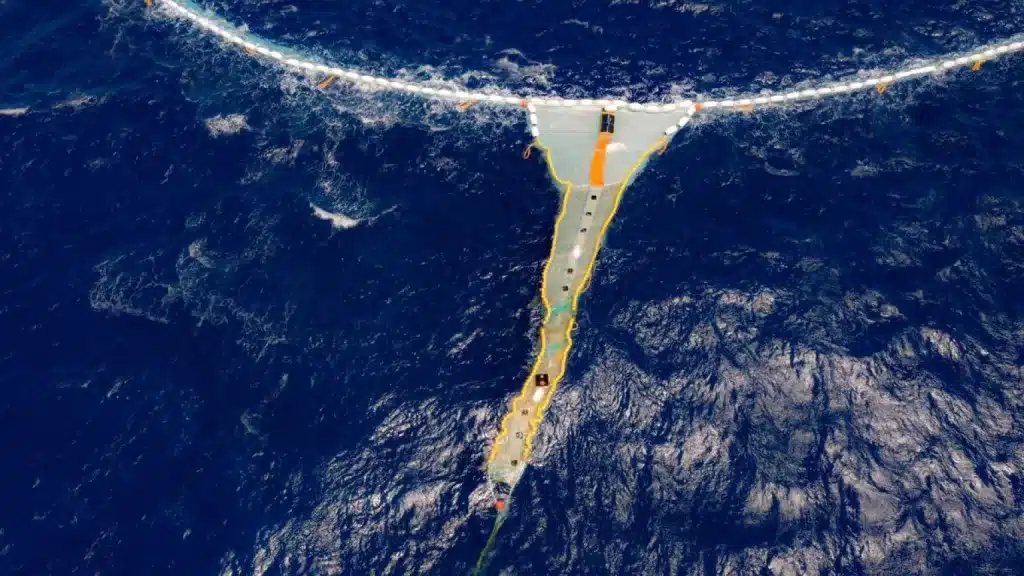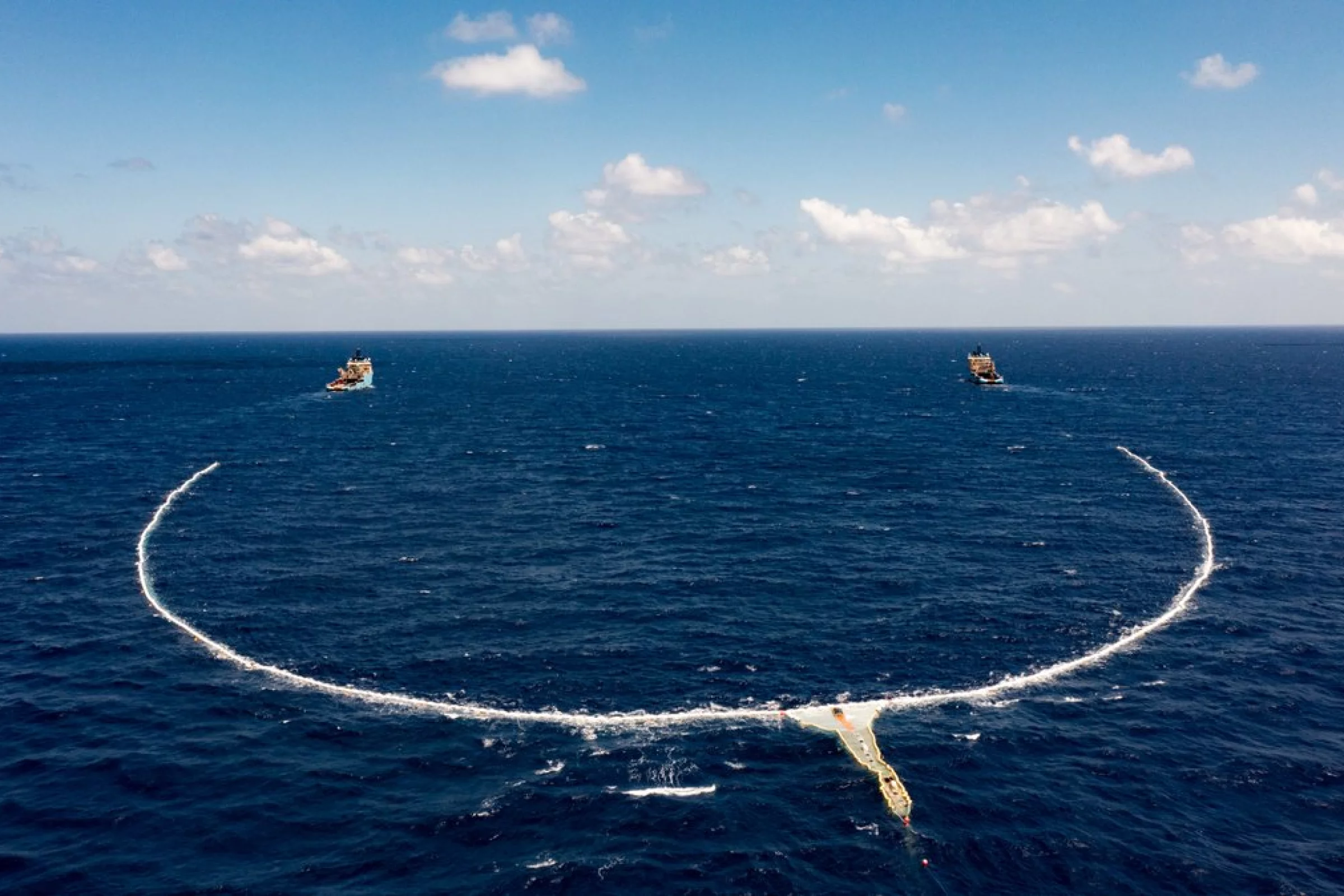Since it first emerged with the bold vision of cleaning plastic from the seas way back in 2013, the Ocean Cleanup Project made a lot of changes to the design of its waste collection barriers.
The last one might be the most important one yet. The team switched from a passive design based on ocean forces to an actively propulsion one, which is much more efficient at capturing garbage.
The basic idea
Originally, the goal behind the Ocean Cleanup Project system was to anchor a massive U-shaped floating barrier to the seabed. The barrier would have used ocean currents to collect garbage and plastic waste that ended up in that sector.
Later versions took a different approach: powered by currents, waves and wind, they created a speed difference with the plastic waste that allowed it to collect rubbish as the barrier moved through the water.
Yes, just like a kind of trawl net.

The problems and the improvement of the system
The tests of this approach in the Great Pacific Garbage Patch (Large Pacific Garbage Patch), the huge island of piled up waste in the ocean, showed that the design was not up to scratch.
The system had great difficulty maintaining the speeds necessary to collect garbage.
For this the team has made some updates. Most notable was a huge parachute designed to slow the barrier and maintain a constant speed, so that faster-moving plastic could slide into the opening and stay there.
The future of the fight against ocean garbage: active propulsion systems
The system today features manned vessels at both points of the U-shaped barrier. Vessels literally tow the net through the water, at a constant speed of 1,5 knots.
The idea is to channel the collected garbage into areas with high concentrations of waste, with a huge advantage: this approach is commercially scalable.
The final project, called Jenny, features an 800-meter (2.640-foot) long reef and is described as the Ocean Cleanup Project's first large-scale system.
The challenge to the great Pacific litter
It was first released in the Great Pacific Garbage Patch this week and it will undergo more than 70 separate tests over the next 60 weeks. Through these tests, the team plans to not only validate the design, but to demonstrate that it has limited environmental impact and no safety concerns, while also collecting a significant amount of garbage.
With so much plastic pouring into the oceans every day, the team will have their work cut out to clean up the mess. An equally important part of his solution is to collect much of this waste as it pours into the sea from the world's most polluted rivers, with a system called The Interceptor.


